A legacy of the colonial wars, the fortresses are excellent options for a historical and cultural tour!
The fortresses were built by the Portuguese when the great European nations began to conquer the new world, our American continent. South America was particularly disputed by the Portuguese and Spaniards. leading the Kingdom of Portugal to invest heavily in the defense of strategic points on its part of the new world.
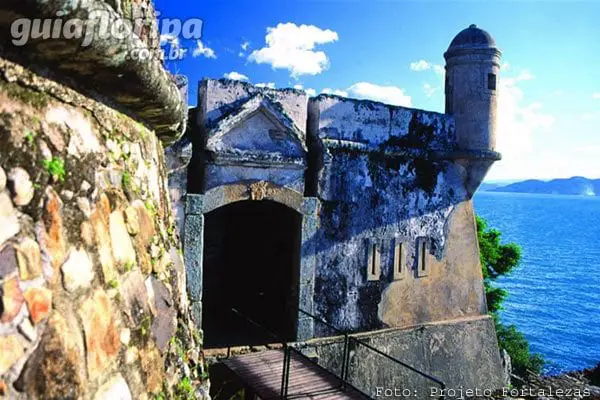
Santa Catarina Island was one of these points, located exactly on the route between Spain and its main colonies in South America, Buenos Aires e Asuncion. In this scenario, the group of forts on the island of Santa Catarina composed at the time a defensive system to prevent a probable Spanish invasion, which sooner or later would happen, as it actually did.
Currently, this set composes a unique, real historical cultural scenario, which is being recovered, revitalized and delivered to the population for visitation.
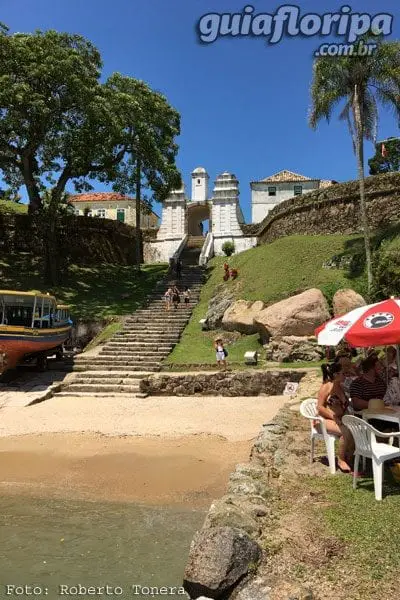
Most visits take place through schooner tours, which depart from the warehouse in the center, under the bridge Hercilio Luz, from Sambaqui Beach ou from Canasvieiras beach. On this tour of the North Bay sea, a true open-air history lesson, you will learn about the role of Santa Catarina Island in the occupation of Southern Brazil and its influence on the formation of Mercosur countries, such as Argentina, Uruguay e Paraguay.
The most significant constructions of this period are the fortresses of Santa Cruz de Anhatomirim, Sao Jose da Ponta Grossa quality San Antonio de Ratones, which formed the defensive triangle of the North Bay of Santa Catarina Island. Subsequently, the forts of Our Lady of Conception of Araçatuba, from Santa Barbara da Vila, São João, Lagoa, São Francisco Xavier and São Luiz (these last four have disappeared), in addition to the Battery of São Caetano da Ponta Grossa and Fort Marechal Moura de Naufragados.
ADVERTISING
In addition to the fortresses of North Bay, the forts of Sant'Ana do Estreito e Santa Barbara da Vila are open to visitors. Araçatuba, shipwrecked e São Caetano remain ruins.
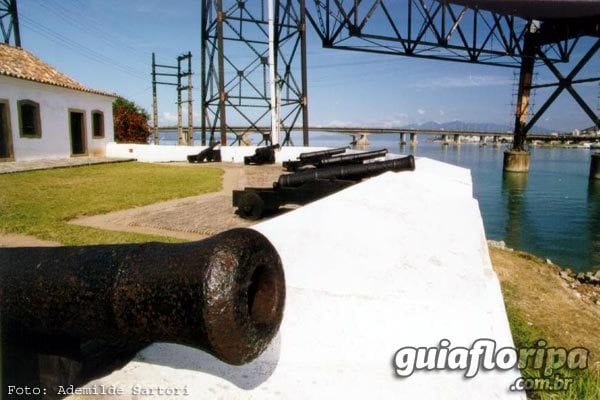
These fortifications are true pieces for the understanding of how the armed defense of the Village of Nossa Senhora do Desterro. On the island, the Portuguese planned and built most of them in the XNUMXth century to defend themselves from attacks coming from the sea. Currently, they are preserved as National Historic Landmarks.
For many years, the complex remained abandoned and in ruins. Currently, the fortresses are managed by the Federal University of Santa Catarina (UFSC) and are the main tourist-cultural attractions in the region, being visited annually by more than 200 thousand people.
ADVERTISING
A bit of the history of the fortresses in Florianópolis
XVIII century. The Portuguese wanted to consolidate in the region, which was a strategic point for navigation and occupation of the south of the American continent. For this, they built the forts that became the defensive system to prevent the Spanish invasion of the then unknown lands of the South.
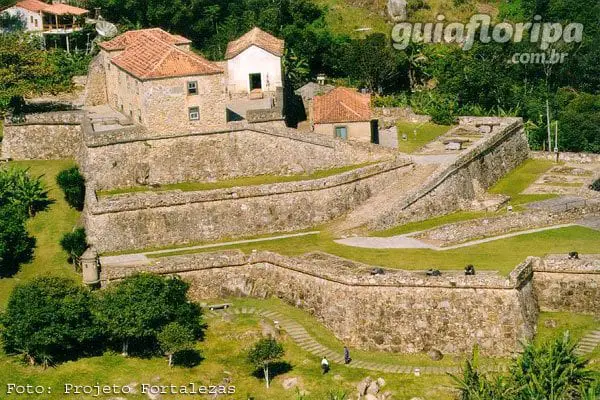
The fortresses are the legacy of the fascinating turbulent time when the Brigadier Jose da Silva Paes, military engineer and first governor of the Captaincy of Santa Catarina, takes possession (1739) and, fulfilling a royal decision, begins the construction of the Santa Cruz Fortress, on a small island at the entrance to the north bay, called Anhatomirim Island.
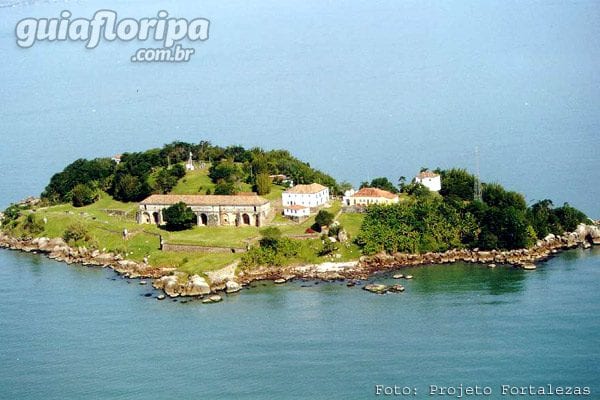
After a year, due to the extraordinary strategic value that the Portuguese and Spanish gave to Santa Catarina Island, the construction of two more fortifications began, the Fortress of Santo Antônio, on another small island, Raton Grande, at the entrance to the North Bay, and Fortress of São José da Ponta Grossa, between the beaches of Daniela e Jurerê, on the island itself. In this way, a fortified defensive triangle in the North Bay of Santa Catarina Island.
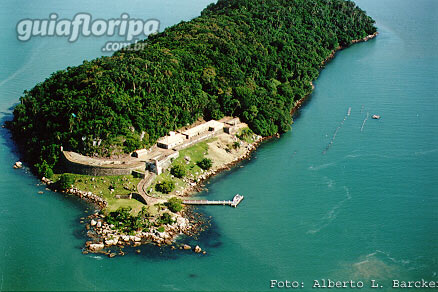
Em 1742 the construction of a fourth fortification begins, the Fortress of Our Lady of Conception, located on the Island of Araçatuba, with the function of guarding the narrow entrance channel of the South Bay. This fortress is part of the Serra do Tabuleiro State Park. Its construction would complete what Silva Paes considered an adequate defensive system for Vila do Desterro.
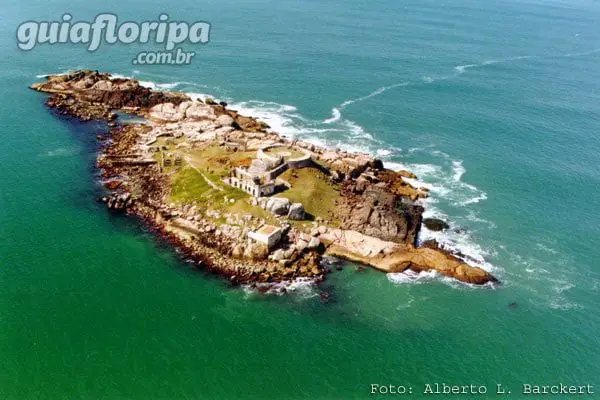
Some historians claim that the fortification system of the north of the island failed in the only defensive he participated. Others, however, based on recent research, attest that its effectiveness lay precisely in the fact that no enemy dared to challenge such a defensive system without being up to the challenge. So much so that, in the only invasion that Santa Catarina Island suffered, after the construction of the defensive system, which took place in 1777, the Spaniards strategically chose to disembark before reaching the fortresses. In possession of a valuable map of the region, they landed at Praia de Canasvieiras and carried out the invasion by land.
Commanded by nothing more and nothing less than the first viceroy do Viceroyalty of Rio de la Plata, Don Zeballos (or Dom Ceballos), came from Spain and headed for Montevideo with a magnificent fleet (more than a hundred vessels) and a huge army (about ten thousand men). The mission was important: to take possession of the viceroyalty and fight the Portuguese army.
ADVERTISING
On the way to their mission, they passed through the southern Brazilian coast, invaded Santa Catarina Island, surrendered the fortresses and conquered the village of Nossa Senhora do Desterro. later, by Treaty of San Ildefonso, the Island of Santa Catarina would be returned to the Lusitanian Crown, however, it would be up to the loser to commit that "in no time, of peace or of war, in which Portugal was not a party, would the Island be used as a naval base, not even transitory ".
The Silva Paes Defensive System was increased in the following decades with the construction of the São Francisco Fort, in Praia de Fora, and the Santana Fortress, on the tip of the Island, closer to the mainland, where the Hercílio Luz Bridge. It was also installed, almost next to the São José da Ponta Grossa Fort, the São Caetano Battery and the São Luiz Fort was started, at the end of Praia de Fora.
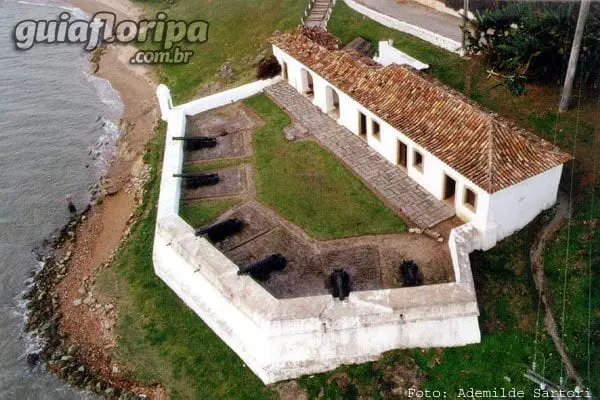
At some date prior to 1786, the Fortress of Nossa Senhora da Conceição da Lagoa is built, whose exact location of construction is unknown, because no ruins remained of this building.
Visitation: The fortresses of Anhatomirim, São José da Ponta Grossa and Ratones are once again open to the public. Visits were temporarily suspended due to lack of financial resources to keep them running, according to UFSC, responsible for maintaining the forts. For details, click on the desired fortress below.
Who can help:
- Tours and Boat Rental Companies
Research support: Multimedia Strongholds Project.





